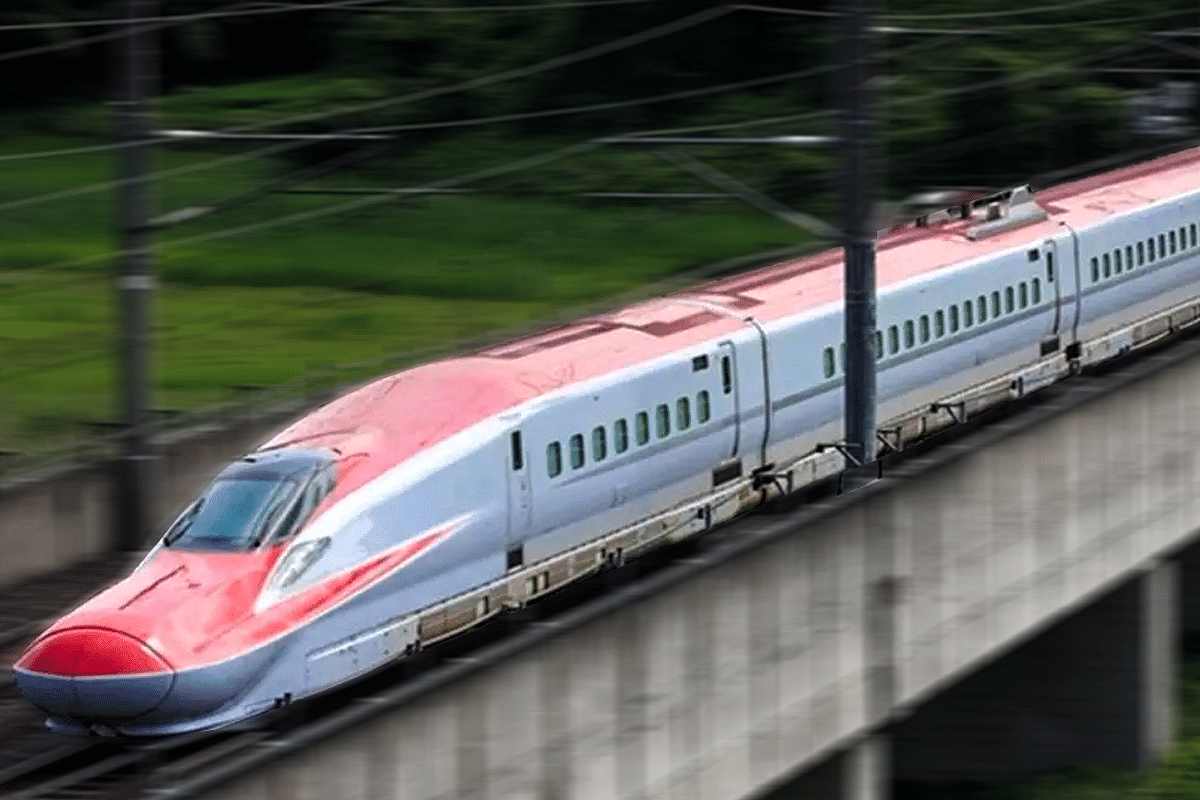Infrastructure
India Tells Japan To Float Tenders For Bullet Train Systems Without Delay

Bullet train is expected to cover 508.17 km distance in just about two hours.
Tenders for the electrical and signalling systems, as well as the rolling stock, for the Mumbai-Ahmedabad high-speed rail corridor to be floated soon.
India has told Japan in the sixth Joint Working Group meeting that the tenders for the systems, particularly the electrical and signalling, should be granted between December and March.
The high-speed rail project was sanctioned in December 2015 at an estimated cost of Rs 108,000 crore, with 80 per cent Japanese funding as an easy loan.
An 80 per cent soft loan from Japan government’s Japan International Cooperation Agency (JICA) mandates that critical components be sourced only from Japanese suppliers as part of the bullet train project in India.
According to Indian Express, Japan and India have agreed to set a price cap for the systems and rolling stock. Japanese businesses will bear the excess if their prices exceed the cap, outside the loan agreement.
The agreement resolves a long-standing project impasse, as many essential products supplied by Japanese companies were found to be up to 90 per cent more expensive than projected by project advisors.
“Since there is a cap agreed by both parties, and since civil works are now being executed at a fast pace, there is no roadblock to floating the systems tenders for the Japanese firms,” the report added.
The National High-Speed Rail Corporation (NHSRCL), is carrying out the bullet train project. According to a report in PTI, as per the shareholding pattern, the central government is to pay Rs 10,000 crore to the NHSRCL.
While the two states involved — Gujarat and Maharashtra — are to pay Rs 5,000 crore each. Japan will pay the rest through a loan at 0.1 per cent interest.
The purchase of the rolling stock, or the actual train units, was another issue for the project. Only Kawasaki and Hitachi are permitted to provide the rolling stock in Japan.
The Indian side sought to prevent a scenario in which both corporations jointly submit a bid because that could increase the cost. The issue has been resolved, as both parties have agreed to a price cap on the project.
NHSRCL has recently issued bids for the tunnelling works for a 21 km long tunnel, including a 7 km undersea tunnel, as the bullet train project is gaining momentum.
It is a major sign that the project may finally be able to put its land-related problems in the state behind it.
Under Maharashtra's new government, the project was working to resolve its land-acquisition issues. Nearly 96 per cent of the land for the project has been acquired in Maharashtra.
The project involves two states and one Union Territory: Maharashtra, Gujarat, and Dadra and Nagar Haveli.
The project achieved 100 per cent and 98.8 per cent land acquisition in Dadra and Nagar Haveli and Gujarat, respectively, in August.
The country's first 'bullet' train, a nickname the train gets from its bullet-like shape and speed, will traverse west India's landscape, covering a 508.17 km distance between Mumbai and Ahmedabad in just about two hours.
It will save time compared to the current travel time between the two terminal stations by about nine hours (by bus) or six hours (by conventional railways).
Introducing ElectionsHQ + 50 Ground Reports Project
The 2024 elections might seem easy to guess, but there are some important questions that shouldn't be missed.
Do freebies still sway voters? Do people prioritise infrastructure when voting? How will Punjab vote?
The answers to these questions provide great insights into where we, as a country, are headed in the years to come.
Swarajya is starting a project with an aim to do 50 solid ground stories and a smart commentary service on WhatsApp, a one-of-a-kind. We'd love your support during this election season.
Click below to contribute.
Latest